Partners
Project coordinator
Department
Allergy and clinical Immunology
About
The National and Kapodistrian University of Athens (NKUA) is a research University that builds on foundations which were laid over 183 years ago. The NKUA has attained recognition as an Institution of educational and scientific excellence and as a source of intellectual wealth for our country. According to the Top Universities by Top Google Scholar Citations rankings by Webometrics, the National and Kapodistrian University of Athens is ranked 41st in the world, 10th in Europe and 1st not only among Greek Universities but also among Universities of the Balkan and Mediterranean areas.
Role in the project
In SynAir-G, NKUA is responsible for the clinical cohort of WP2 “Real-life multipollutant scenario: children at school and beyond”, and will establish a relevant multipollutant real-life setting. School children will be monitored for two years and health outcomes will follow. NKUA is also responsible for WP8 “Project management & Networking”. Among others this includes the supervision and control of scientific progress and networking design and implementation.
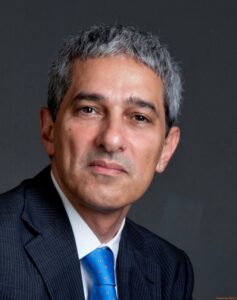
Nikolaos G. Papadopoulos | Professor, Head, Allergy Department
I have the luck and challenge to coordinate SynAir-G. Putting together such a multidisciplinary group and activities is demanding, but also necessary to mitigate the complex effects of inddor air pollution on health
Consortium partners
About
EFA is a non-profit network of allergy, asthma and COPD patients’ organisations, representing 45 national associations in 26 countries and over 500,000 patients. EFA is dedicated to making Europe a place where people with allergies, asthma and COPD have the best quality of care and a safe environment, live uncompromised lives, and are actively involved in all decisions influencing their health. EFA does this through building its network capacity and representation, patient evidence and through EU advocacy.
Role in the project
In SynAir-G, EFA is responsible for Communication and Dissemination activities, ensuring that project results are shared with communities and stakeholders most impacted by air pollution. EFA will also help develop air quality guidelines for policy-makers, building on the evidence generated in the project.
![]()
Valeria Ramiconi | Programme Manager
Within SynAir-G I coordinate the WP7 communication and dissemination strategies and activities. I am also coordinating one of IDEAL Cluster working group concerning transforming science-based evidence into policy.
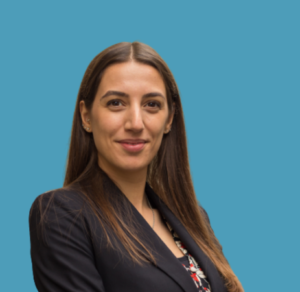
Agata Papotto | Prevention and Healthcare Manager
In the SynAir-G project, I am responsible for the management and implementation of communication, dissemination and exploitation activities within WP7. Together with the EFA’s team, I make sure the project results have a wider outreach through patients, patient associations and key EU stakeholders.
 Angelica Valeria Rossi | Junior Project Officer
Angelica Valeria Rossi | Junior Project Officer
With my colleagues, I help handling the communication and dissemination strategy and channels, including SynAir-G social media profiles, newsletters, workshops, and website. With EFA, Project’s communication and dissemination will be written to reach patients and the general public.
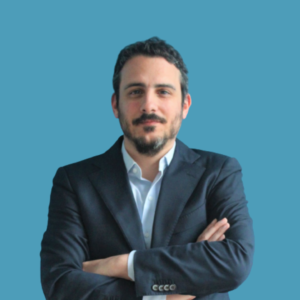
Panagiotis Chaslaridis | Senior Policy Advisor
My work at the SynAir-G project is to link the project objectives with existing EU policy. In this context, I am responsible for highlighting and advancing the policy-related elements of the project, including developing policy briefings and identifying relevant stakeholders at the EU and national level.
About
BCU is an Italian SME, provider of teleradiology IT services to support diagnostic imaging facilities, through tailored solutions with high technological innovation.
Role in the project
BCU will contribute to novel viral bio-sensor development, and to AI-methods implementation for identifying health impacts of synergistic pollutant interactions.
![]()
Giusy Esposito | R&D physicist
![]() Marco Randon | Computer science engineer
Marco Randon | Computer science engineer
About
CyRIC is an internationally award-winning Cyprus-based high-tech company developing breakthrough products, for both local and international customers specializing in the fields of IoT, Biotechnology, Unmanned Air and Ground vehicles, Robotics/wearables and AI/ML. In addition, CyRIC’s R&D Center provides professional services to both local and international customers. Our costumers are specialized in the fields of product design, engineering and prototyping, embedded electronics design, IoT, and software development.
Role in the project
CyRIC will lead the Indoor Air Quality (IAQ) sensor integration in a multisensing system including the development of custom air sampling unit and automated assay execution for novel biosensors. CyRIC also participates in the Intelligence Engine development leading data collection, processing and integration.
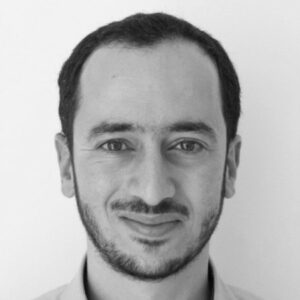
Antonis Hadjiantonis | PhD , Manager – Electronics and Networks Division, R&D Department
In this project we, at CyRIC, are leading WP5 that involves the sensor integration and clean air interventions. We are responsible for developing the SynAir-G integrated autonomus multisensing platform based on sensors developed in WP1.
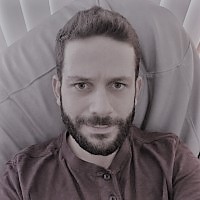
Kleanthis Erotokritou | PhD , R&D Engineer
In this project we, at CyRIC, are leading WP5 that involves the sensor integration and clean air interventions. We are responsible for developing the SynAir-G integrated autonomus multisensing platform based on sensors developed in WP1.
![]()
Atanas Terziev | R&D Engineer
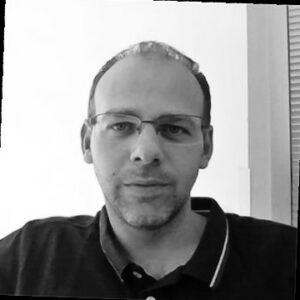
Andreas Papadopoulos | PhD , Manager – Software R&D and IT
In this project we , at CyRIC, are responsible for data collection, processing and integration.
![]()
Loizos Koukoumas | Software Developer
About
Since 2015, TEQOYA designs and manufactures eco-friendly air purification technologies. Energy-efficient, comfortably silent, without ozone emissions, without disposable filters, without programmed obsolescence… we are committed to making products that are healthy and friendly to you and to the planet!
Role in the project
TEQOYA will provide samples of its new flagship air purifier ALANA to equip schools, and integrate in it a brand new revolutionary filter for VOCs. We will also make ALANA communicate with the air monitoring system of Synair-G data platform.
![]()
Pierre Guitton
![]()
Emilien Caux
![]()
Yannick Lagardère
About
Naava is a Nordic indoor nature technology company founded in 2012. We are the global market leader in living green walls and biological indoor air purification with over 390 000 daily users over 16 different countries.
Role in the project
We will provide Naava products to work as a intervention tool for the SynAir-G project, so we can learn how active green walls can help with naturalizing indoor air.
![]()
Name | Position
Description
About
INLECOM Innovation is the research arm of the INLECOM Group, and it is a non-profit foundation, based in Athens. It undertakes innovative research in the areas of information technology, applied to transport, logistics and telecommunications in Cloud, On-Premise, and Hybrid applications.
Role in the project
INLECOM assumes the role of the WP7 Leader having extensive expertise in EU funded projects, gained from a series of FP7/H2020 projects that has successfully participated. INLECOM Innovation will also be participating in key technical tasks while leading the development of the digital twin platform along with an intuitive graphical interface of the AI results.
![]()
Maria Kampa
As a member of the SynAir-G Consortium, INLECOM is leading the development of the SynAir-G gamified application and undertakes the delivery of the project’s digital twin platform which will present the AI results through an intuitive graphical interface. Having an international team of experts, INLECOM is leading WP7, and will be mainly responsible for preparing the Data Management Plan of the project and ensuring the exploitation of the SynAir-G’s results.
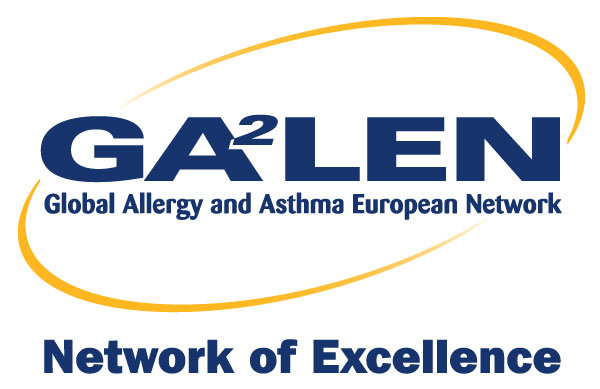
About
GA²LEN, the Global Allergy and Asthma European Network, was created to combat fragmentation in the European research area, ensuring excellence in EU allergy and asthma research by bringing together institutions and researchers from across the EU. The network notably put in place centralized structures and an office overseeing the multiple assets in knowledge in the different GA²LEN partners, enabling them to optimally synchronize their research efforts.
Role in the project
GA²LEN will produce guidelines on the findings of these synergies between outdoor and indoor air quality, considering how these pollutants react with each other. Additionally, it will be a support for the development of SynAir-G Roadmap and Guidelines by consolidating the outcomes and lessons learned from research and piloting activities, and assist with its full dissemination.
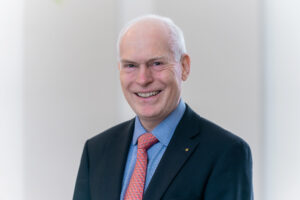
Torsten Zuberbier | GA²LEN President
GA²LEN is active in WP7 and WP8 and will, working together with EFA, produce practical guidelines on the findings of the synergies between outdoor and indoor air quality, and to consider how these pollutants react with each other. Other tasks include 7.2.2. Position Paper & recommendations, networking and dissemination of knowledge gained.
![]()
Ingrid van Hofman | GA²LEN Network Manager
GA²LEN is active in WP8 for networking internally and externally and the creation of a Stakeholders database and stakeholder mapping to include all involved sectors. GA²LEN will network within the consortium and to all stakeholders to coordinate pro-active workshops and to collate, condense, and disseminate all results of SynAir-G and make them available to all stakeholders across all media platforms. Organization of Networking Workshop(s).

Department
Research and Transfer
About
DIN, the German Institute for Standardization, is the independent platform for standardization in Germany and worldwide. As a partner for industry, research and society as a whole, DIN plays a major role in supporting the marketability of innovative solutions through standardization, in different topics, including research projects. More than 36,000 experts from industry, research, consumer protection and the public sector bring their expertise to work on standardization projects managed by DIN. The results of these efforts are market-oriented standards and specifications that promote global trade, encouraging rationalization, quality assurance and environmental protection as well as improving security and communication.
Role in the project
DIN will support the standardization activities, i.e. analysis of existing standards, identification of potential standardization gaps, facilitation of new standardization activities.
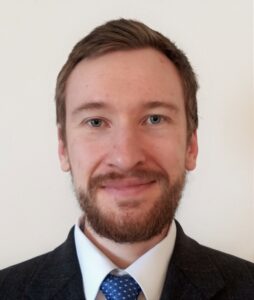
Stefan Kelnberger | Project Manager
As a member of the SynAir-G project, DIN (German Institute for Standardization) leads task 7.3 as well as the IDEAL cluster’s WG 4, which both revolve around standardization. DIN will assess the standardization landscape, identify a standardization strategy based on the project’s/cluster’s results and initiate standardization activities, if suitable.
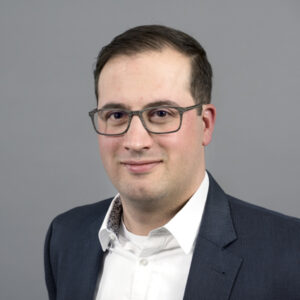
Christian Goroncy | Project Manager, Dr.
As a member of the SynAir-G project, DIN (German Institute for Standardization) leads task 7.3 as well as the IDEAL cluster’s WG 4, which both revolve around standardization. DIN will assess the standardization landscape, identify a standardization strategy based on the project’s/cluster’s results and initiate standardization activities, if suitable.
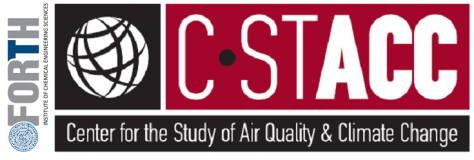
Department
Institute of Chemical Engineering Sciences/ Center of Studies on Air quality and Climate Change (C-STACC)
About
C-STACC aims to understand how atmospheric processes impact climate, health, and ecosystems through a combination of theory, measurements, and simulations.
Role in the project
FORTH is involved in the development of low-cost sensors, aiming to identify indoor and outdoor pollution levels. Along with the use of high-end instrumentations we aim to chemically characterize the air within the classrooms and compare the pollutant levels with the outdoor concetrations. The use of high-end instrumentation will assist in the optimization of the low-cost sensors. In addition, FORTH will investigate the composition and sources of indoor aerosol in order to evaluate, with the collaboration of EPFL, the oxidative potential.
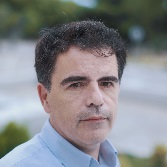
Spyros Pandis | Principal scientist
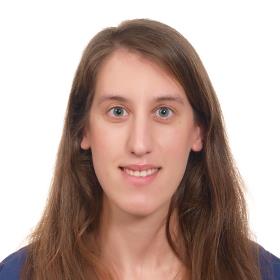 Eleni Dovrou | Postdoctoral scientist
Eleni Dovrou | Postdoctoral scientist
 Giannis Apostolopoulos | Postdoctoral scientist
Giannis Apostolopoulos | Postdoctoral scientist
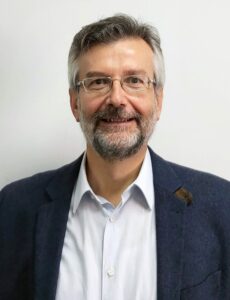 George Fouskas | Senior scientist
George Fouskas | Senior scientist
 Silas Androulakis | PhD researcher
Silas Androulakis | PhD researcher
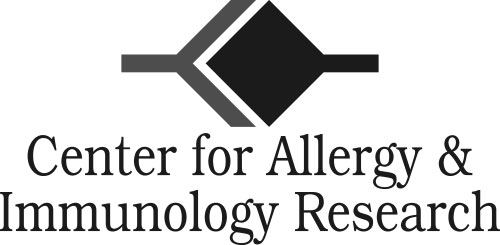
About
Center for Allergy and Immunology Research (CAIR) includes the major outpatient clinic in Transcaucasian region. It treats over 10000 allergy patients per year; trains students and specialists; and, conducts clinical trials and basic research. It is led by Prof. Maia Gotua, Vice President of the Georgian Association of Allergology and Clinical Immunology, who actively participates in different international task forces, and multicenter studies with a special interest in asthma and allergic rhinitis. CAIR has conducted in Georgia the ISAAC study, a huge global epidemiological survey in children with over 1.2 million participants worldwide.
Role in the project
As a clinical partner in SynAir-G, and in the frame of WP2 “Real-life multipollutant scenario: children at school and beyond”, CAIR will equally recruit and follow-up participants. CAIR will provide local communication with schools and families, representing diverse cultural and socioeconomic backgrounds. It will perform: a provision of instructions, training for participation, and baseline assessments of respiratory, immune, and mental health, using questionnaires and relevant physiological measurements (e.g. spirometry, FeNO). It will be in charge of the positioning of the sensors, developed in WP1, and to cross-checking their functionality.
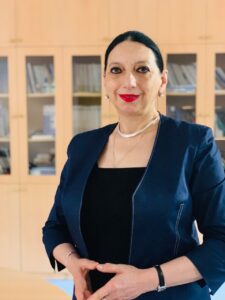
Maia Gotua| Principal scientist, local PI, Prof., MD., PhD
As a Principal scientist of CAIR and local PI of the project in Georgia, I have responsibility to coordinate CAIR’s activity to participate in: 1) cohort inclusion stage of WP02, and communication with schools and families representing diverse cultural and socioeconomic backgrounds in Tbilisi, Georgia; 2) cohort follow-up for a school year. Organize regularly visits to schools to keep sensors running and collect materials, provide real-time tracking, that will be coupled with regular communications and face-to-face visits for health outcome assessments; 3)Together with my colleagues I’ll take part in health outcomes analysis and reporting. In the frame of WP03, I have to organize identification of indoor sources of air pollutants in schools and homes.
![]() Tamar Abramidze | Senior scientist, PhD
Tamar Abramidze | Senior scientist, PhD
In the frame of WP02, CAIR participates in: 1) cohort inclusion stage of WP02, and responsible for communication with schools and families representing diverse cultural and socioeconomic backgrounds in Georgia; 2) cohort follow-up for a school year. As local investigator, CAIR, will regularly visit schools to keep sensors running and collect materials, real-time tracking will be coupled with regular communication and face-to-face visits for health outcome assessments; 3) health outcomes analysis and reporting. In the frame of WP03, CAIR participates in identification of indoor sources of air pollutants in schools and homes.
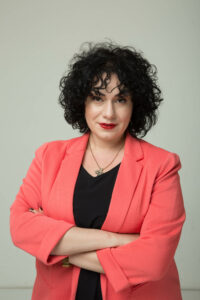 Maia Rukhadze | Senior scientist, Prof., MD., PhD
Maia Rukhadze | Senior scientist, Prof., MD., PhD
In the frame of WP02, CAIR participates in: 1) cohort inclusion stage of WP02, and responsible for communication with schools and families representing diverse cultural and socioeconomic backgrounds in Georgia; 2) cohort follow-up for a school year. As local investigator, CAIR, will regularly visit schools to keep sensors running and collect materials, real-time tracking will be coupled with regular communication and face-to-face visits for health outcome assessments; 3) health outcomes analysis and reporting. In the frame of WP03, CAIR participates in identification of indoor sources of air pollutants in schools and homes.
About
The Institute of Food Sciences (ISA) of the Italian National Research Council (CNR) is hosted in Avellino, Italy. Its research activities aim to assess food quality, and safety and to investigate the relationships between food and health. Technology transfer is also relevant part in the CNR-ISA mission. Hence, these features make CNR-ISA peculiar in both the CNR and international research context.
Role in the project
The CNR unit is involved in the development of a novel biosensor for the selected viruses (Rhinoviruses, Influenza viruses, SARS-CoV-2) in the air. For this purpose, will be performed the following activities: 1. Identification, production, and characterization of the MRE against the target virus 2. Identification of the fluorescent dyes for RET experiments and development of the sensors Also, the CNR’team will be involved in the LPS detection in dust samples.
![]()
Sabato D’Auria | Director, PhD
![]()
Maria Staiano | Researcher, PhD
![]()
Antonio Varriale | Researcher, PhD
![]()
Angela Pennacchio | Researcher, PhD
![]()
Alessandro Capo | Researcher, PhD
![]()
Concetta Montagnese | Researcher, PhD

Department
Department of Ecology, School of Biology
About
The Aristotle University is the largest teaching and research university in Greece. Present in the top 500 University Rankings, it delivers top education in aspiring scientists. The School of Biology, and within the Department of Ecology, has a diverse course program, that includes but not limited to Botany, Ecology, Zoology, and Genetic and Immunology. Particularly, The Department of Ecology conducts multi-disciplinary research, helping to address the problems of our era, like climate change and emerging environmental and human threats.
Role in the project
In SynAir_G, the team of Aristotle University will be responsible of: development, standardization and evaluation of low-cost, semi-portable, automatic, real-time bioaerosol sensing system (fungal spores and pollen); detection, and quantification of all the major indoor allergens across 25 sites in Europe.
![]()
Thanos Damialis

Department
Internet of Things Lab (IoT-Lab)
About
The Internet of Things Laboratory (IoT-Lab) at the Computer Engineering and Informatics Department of the University of Patras aims at the design, analysis and development of efficient sensor algorithms; IoT systems and applications for digital health; smart cities and buildings, industries, transport, crowdsourcing, privacy and cybersecurity. Our vision is pursuing high quality, scientific, multidisciplinary research, which is inspired by practice and applied to the real world. For digital health, we have created allergy maps using crowdsourcing and social network analytics; multi-sensing activity recognition systems for allergic symptoms; as well as a voice based diagnostic system.
Role in the project
UoP will lead WP6 (the “Intelligence Engine”), and will conduct the following two research tasks: the design and development of effective Artificial Intelligence (AI) methodologies for identifying synergistic effects of pollutants, and their health impacts; and, the spatiotemporal modeling of pollution dispersion in classrooms. Also, UoP will contribute to the wearable devices of the sentinel system and the wireless communications of the integrated sensor and mitigation system.
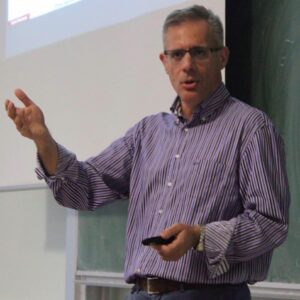
Sotiris Nikoletseas | Professor of Computer Science, Director of oT-Lab
Professor of Computer Science, specializing in algorithms, systems and applications for the Internet of Things (IoT). He is the University of Patras (UoP) site leader in SynAirG, a member of the Steering Committee and the WP6 leader.
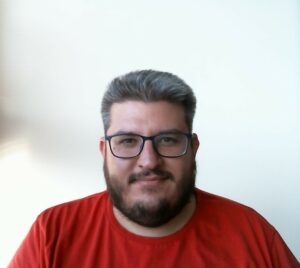
Gabriel Filios | Post-doctoral researcher
Leader of the IoT systems R&D team of IoT-Lab of University of Patras, Greece (SynAir-G’s UoP partner). He is responsible for the development of communication solutions for the pollutants sensing systems and the mitigation systems (WP5), and the crowdsensing solutions for data aquisition form the wearable devices (WP2).
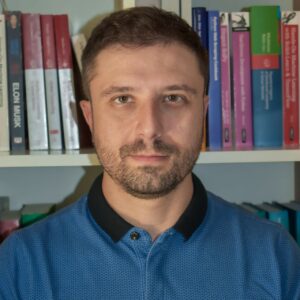
Pantelis Tzamalis | Post-doctoral researcher
AI Team Leader of the SynAirG’s University of Patras (UoP) partner, specializing in developing Trustworthy and Robust AI solutions. In particular, he is responsible for the development of the intelligent component that will automatically extract information about the synergistic effects between the project’s data resources.
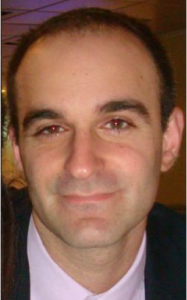 Christoforos Raptopoulos | Assistant Professor at the Department of Mathematics
Christoforos Raptopoulos | Assistant Professor at the Department of Mathematics
Dr Christoforos Raptopoulos holds a PhD in Theoretical Computer Science. His research is concerned with various aspects of randomness in computation, including random graphs, randomized algorithms and average case analysis. Within the project he will consider how mathematical statistics may be employed to reveal synergies between pollutants.

Dimitris Markantonatos | PhD researcher
AI Research Engineer of the SynAirG’s University of Patras (UoP) partner, specializing in developing robust ML/data pipelines with a particular interest in the optimization of AI solutions. He is responsible for the development of the pipelines and the algorithms comprising the intelligence component that will extract the synergistic effects among the project’s multivariate data resources.
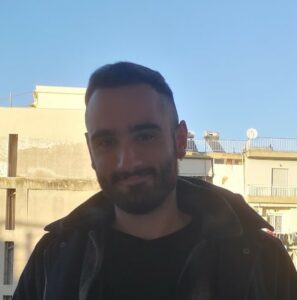
Fotis Kalioras | Research Engineer
Member of the IoT-Lab of the Computer Engineering and Informatics Department at the University of Patras. He assists with the development of communication solutions for the pollutants sensing and mitigation systems as well as the selection of wearable devices and the development of the platform for reliable data acquisition from these.

Panos Kapetanidis | Research Engineer
Panos Kapetanidis is a member of the IoT Lab of the Department of Computer Engineering and Informatics at the University of Patras. His research interests focus on the field of Artificial Intelligence (AI) and he will work in SynAirG for the development of the intelligent component that will automatically extract information about the synergistic effects between the project’s data resources.
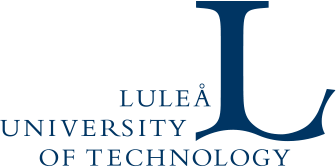
Department
Information Systems
About
Luleå University of Technology’s Information Systems research subject focuses on the design and use of information technology in relation to humans, organizations, and societies. Our vision is designing and developing knowledge about the digital transformation for a sustainable society, taking our starting point in local conditions to make global impact.
Role in the project
LTU will contribute to end-user engagement and citizen science, including identification of users’ motivations and needs, more particularly regarding the gamification, and app development. LTU will also contribute to dissemination of results by publishing scientific papers in conferences and journals.
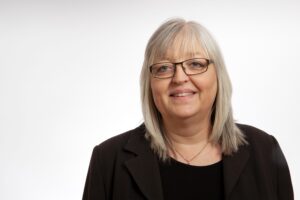
Anna Ståhlbröst | PhD, Chaired professor
In this project we, at LTU, are responsible for developing user engagement plan as well as citizen science activities to test and use the developed mobile application. We will also produce and disseminate research results.
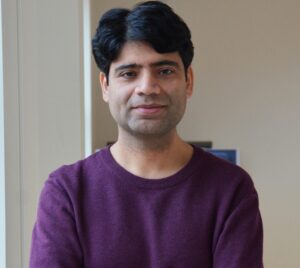
Abdolrasoul Habibipour | PhD, Senior lecturer
In this project we, at LTU, are responsible for developing user engagement plan as well as citizen science activities to test and use the developed mobile application. We will also produce and disseminate research results.
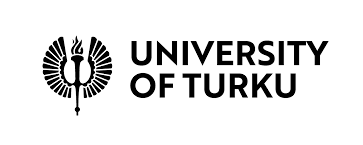
About
The University of Turku is an international science university which creates innovation for the future, well-being, and knowledge through multidisciplinary research and education. The Department of Pediatrics involved in SynAir-G has a long tradition of carrying out translational long-term follow-up studies investigating how environmental factors affect health.
Role in the project
The University of Turku is one of the clinical centres which will collect indoor air and clinical data from schools. We aim to recruit 700 pupils from four schools within 2 years. The cohort is enriched by 200 pupils suffering from allergies or asthma. Diverse sampling includes air quality and environmental data, biological samples, pulmonary function data, registry data and health and quality of life questionnaires.
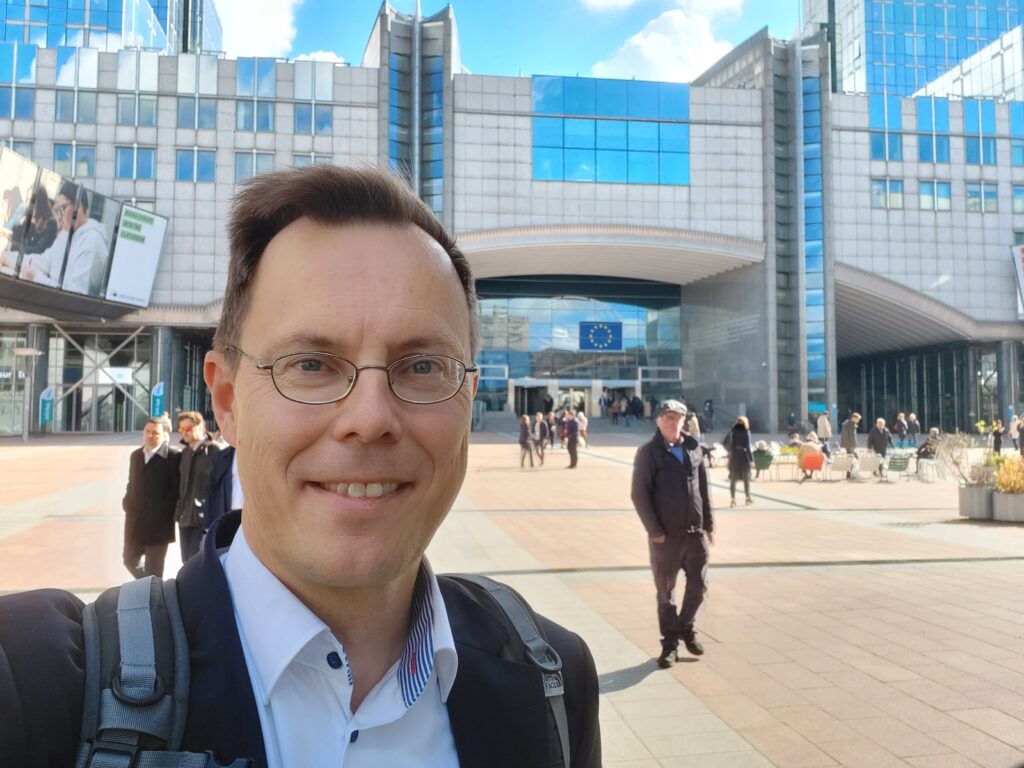 Tuomas Jartti, Professor of Pediatrics, Pediatrician, Pediatric allergist
Tuomas Jartti, Professor of Pediatrics, Pediatrician, Pediatric allergist
Prof. Jartti’s research focuses on the early stages of childhood asthma, allergic inflammation and respiratory virus infections. In SynAir-G, he leads the clinical study centre in Turku and in the IDEAL cluster he leads WG6, Clinical Outcomes.
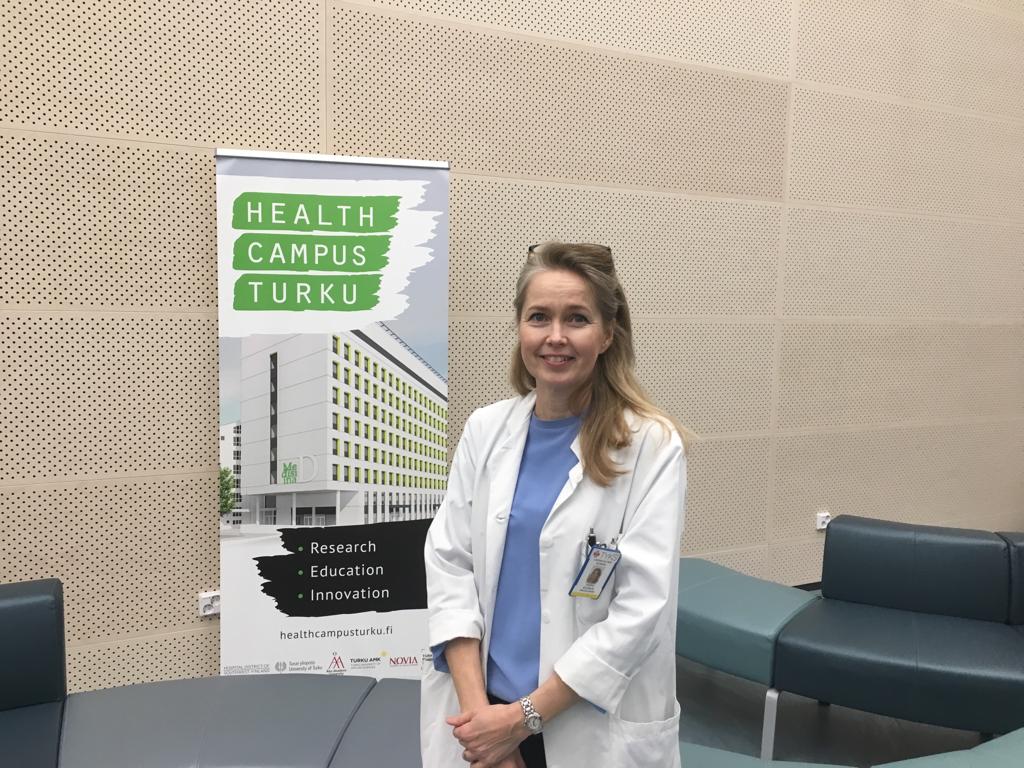 Varpu Elenius, University lecturer, Pediatrician, Pediatric allergist
Varpu Elenius, University lecturer, Pediatrician, Pediatric allergist
Dr Elenius’s research focuses on the early stages of childhood asthma, severe asthma and chronic lung diseases. In SynAir-G, she works as a senior scientist in the clinical study centre of Turku, as well as in the IDEAL cluster in WG6, Clinical Outcomes.
Maria Harti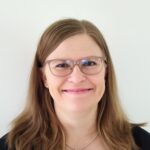 ala, Post-doc researcher, Pediatrician, and Resident in pediatric allergology
ala, Post-doc researcher, Pediatrician, and Resident in pediatric allergology
Dr Hartiala’s research focuses on the early stages of childhood asthma and respiratory virus and bacterial infections. In SynAir-G, she works as a junior scientist in the clinical study centre of Turku and in the IDEAL cluster in WG6, Clinical Outcomes.
 Olli Jartti, Student in mechanical engineering (medical)
Olli Jartti, Student in mechanical engineering (medical)
Olli Jartti’s interests are in medical engineering, both soft- and hardware. In SynAir-G, he works as a technical assistant in the clinical study centre of Turku, as well as in the IDEAL cluster in WG6, Clinical Outcomes.
About
The Montpellier University Hospital Centre (CHUM) is a French university hospital centre and reference center with an international reputation. It hosts many referral units and competence centers labelled by the French Ministry of Health, a real center of excellence. Its main missions are care, research and teaching and it developed health innovation with a lot of convictions. The Montpellier University Hospital Centre is in the 5th position of the national SIGAPS ranking for the numbr of publications.
Role in the project
The CHUM will lead WP3 dedicated to indoor air pollution and routes of exposure. It will also be one of the 5 centres to participate in the clinical study aiming to evaluate the impact of synergies of indoor air pollutants on childhood health and wellbeing. The CHUM will contribute to the WP 5 , 7 and 8 regarding sensor integration, data management, guidelines development, standardization activities , project management and networking.
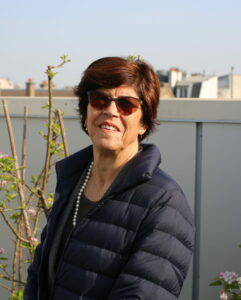
Isabella Annesi-Maesano | Prof. MD, PhD, DSc Allergy Department and IDESP Co-director
I’m an expologist and an epidemiologist involved in the exposomic approach of schoolchildren’s health. As expologist I will estimate schoolchildren’s exposome integrating exposures and sources of exposure at the individual and ecological level. Among others, I will deploy individual sensors (Canarins) assessing air pollutants concentrations in real time. As epidemiologist, I will assess exposome’s impact on schoolchildren’s health (asthma, mental health, etc). through EnWAS. I will conduct Health Impact Assessment to evaluate prevention measures. To better understand the mechanisms, I will also assess inhalation rate and assumed dose of major air pollutants in schoolchildren in real life conditions. Finally, I will contribute to policy proposals.

Davide Caimmi | MD, Allergy Department
I am a clinician and a researcher and will be supervising the clinical project in the Montpellier center.
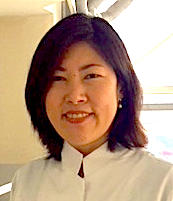
Luciana Kase Tanno |
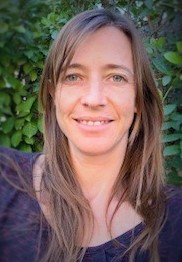
Sylvie Broussous| European Project Manager
I manage the Europe team at Montpellier hospital’s Research and Innovation department. For SynAir-G project, I will support the team project for the financial aspectn, ethics, commmunication and dissemination.
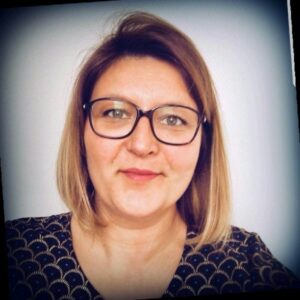
Alexandra Avonde| Assistant european project manager
I work directly with Catherine and Sylvie for the administrative and financial management. I can also work with the medical team to organize the meetings or purchase what they need for the project. I am in contact with the CHUM communication department to develop flyers and posters for the schools involved in the project. I declare the reports on the European portal.
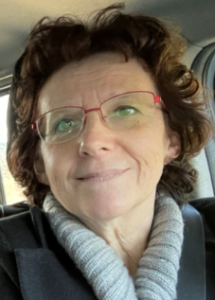
Catherine Barjot | Project Manager
I work as a project manager in the European team of the hospital’s Research and Innovation department. We intervene as a support for the setting-up (budget/regulatory/ethical aspects of the projects, agreements signatures) and the follow-up of european projects (financial reportings).
Department
Department of Molecular Pneumology
About
Universitätsklinikum Erlangen is a university hospital located in the city of Erlangen, Germany. Since its foundation in 1815, it has offered the highest standards of medicine, and incorporated the latest insights from medical research and state-of-the-art equipment into diagnosis and therapy. Its team of more than 9,400 employees, and deployed in approximately 50 different occupations, provides a wide range of services that aims to always ensure patients the best care.
Role in the project
UER will provide insights into the mechanisms of indoor air pollution synergies under the WP 4. Human and murine primary cells, cell lines and in vivo murine disease-models will be used to identify noxious pollutants and investigate the underlying immunological processes. The mechanisms will be further analyzed in precision cut lung slices. The latter method will allow the screening of different pollutants in an ex vivo test system. These in vitro and in vivo models will provide new insights into the synergistic effects of different pollutants in the airways.
![]()
Susetta Finotto
![]()
Susanne Krammer
![]()
Zuqin Yang
Associated partners
About
The Swiss Institute of Allergy and Asthma Research (#SIAF) is an associated research institute of the University of Zurich, and a member of Life Sciences Zurich Graduate School and Academia Raetica. It is performing front academic and translational research in collaboration with universities, research institutes, science academies, the pharma industry, and regulatory authorities on the prevention and treatment of allergic and inflammatory diseases, asthma and respiratory infections, epithelial barriers, microbiome, metabolomics, antigen-specific immune response with a focus on human immunology and precision medicine.
Role in the project
SIAF will conduct research under WP 4. Cell culture models and lung organoids will be used to assess the toxic and barrier-damaging effects of indoor air pollutants on the lungs. Airway organoids will be used to analyze critically dose-dependent pro- and anti-inflammatory balance at the epithelial barrier, including tissue healing, survival factors to noxious high doses, toxic thresholds, and remodeling. For these purposes single-cell sequencing, multiplex cytokine analyses by proximity extension assay and visium spatial imaging, confocal staining, and FITC-dextran flux will be performed.
![]()
Cezmi A.Akdis | Professor, Director of SIAF, MD
At SIAF, we seek to elucidate the effect of various air pollutants on human airway mucosa using primary bronchial epithelial cell-derived airway organoids. We will use airway organoids to analyse critically dose-dependent pro- and anti-inflammatory balance at the epithelial barrier, including tissue healing, survival factors to noxious high doses, toxic thresholds and remodelling.
![]()
Mubeccel Akdis | Professor, Head of Immune regulation group at SIAF, MD
At SIAF, we seek to elucidate the effect of various air pollutants on human airway mucosa using primary bronchial epithelial cell-derived airway organoids. We will use airway organoids to analyse critically dose-dependent pro- and anti-inflammatory balance at the epithelial barrier, including tissue healing, survival factors to noxious high doses, toxic thresholds and remodelling.
![]()
Yagiz Pat | Postdoctoral scientist
At SIAF, we seek to elucidate the effect of various air pollutants on human airway mucosa using primary bronchial epithelial cell-derived airway organoids. We will use airway organoids to analyse critically dose-dependent pro- and anti-inflammatory balance at the epithelial barrier, including tissue healing, survival factors to noxious high doses, toxic thresholds and remodelling.
![]()
Juan Felipe Lopez Crespo | PhD candidate
At SIAF, we seek to elucidate the effect of various air pollutants on human airway mucosa using primary bronchial epithelial cell-derived airway organoids. We will use airway organoids to analyse critically dose-dependent pro- and anti-inflammatory balance at the epithelial barrier, including tissue healing, survival factors to noxious high doses, toxic thresholds and remodelling.
About
École Polytechnique Fédérale de Lausanne(EPFL) is considered one of Europe’s top technical university. It welcomes students, professors and collaborators of more than 120 nationalities. EPFL has both a Swiss and international vocation and focuses on three missions: teaching, research and innovation. EPFL collaborates with an important network of partners, including other universities and colleges, secondary schools and gymnasiums, industry and the economy, political circles and the general public, with the aim of having a real impact on society.
Role in the project
![]()
Name | Position
Description

Department
Division of Immunology, Immunity to Infection and Respiratory Medicine
Role in the project
Within SYNAIR-G, University of Manchester is one of the 5 partners involved in delivery of WP2. We will be recruiting a cohort of school children who will be followed for 2 years, collecting data on pollutant exposure and health and mental wellbeing.
![]()
Clare Murray
![]()
Angela Simpson
Advisory board
About
blablabla
Role in the project
blablabla
![]()
Name | Position
Description
About
blablabla
Role in the project
blablabla
![]()
Name | Position
Description
About
blablabla
Role in the project
blablabla
![]()
Name | Position
Description
